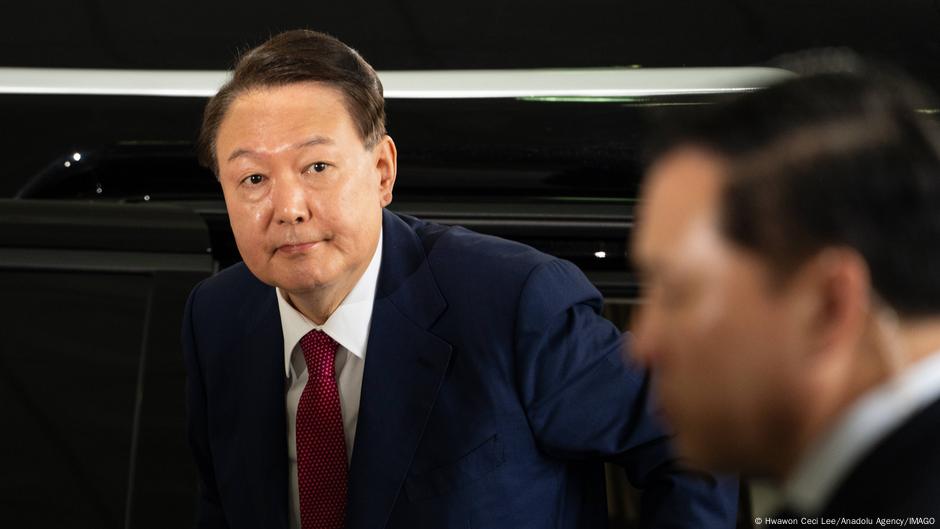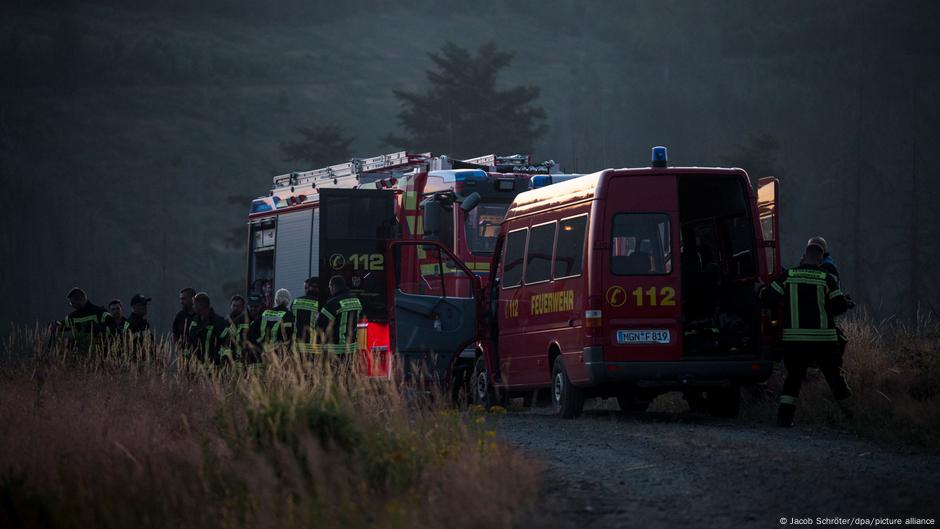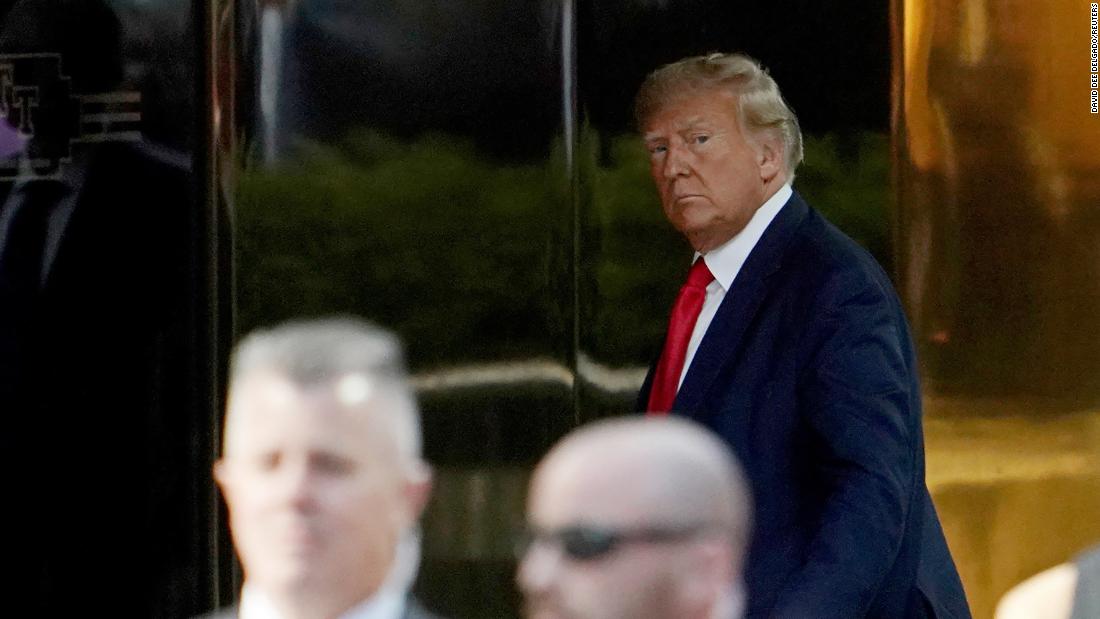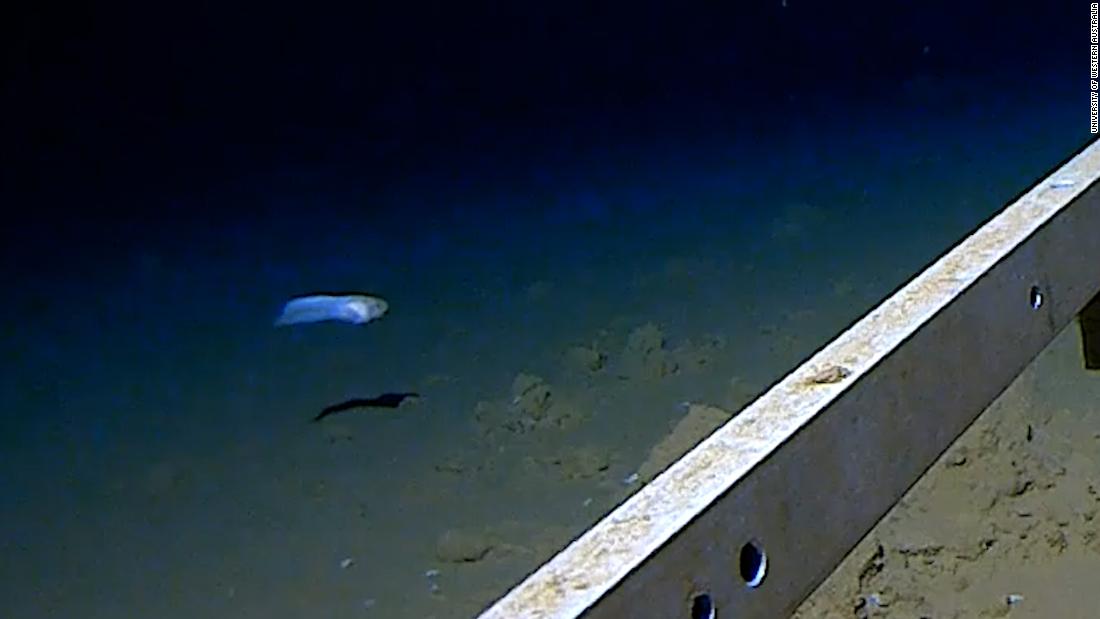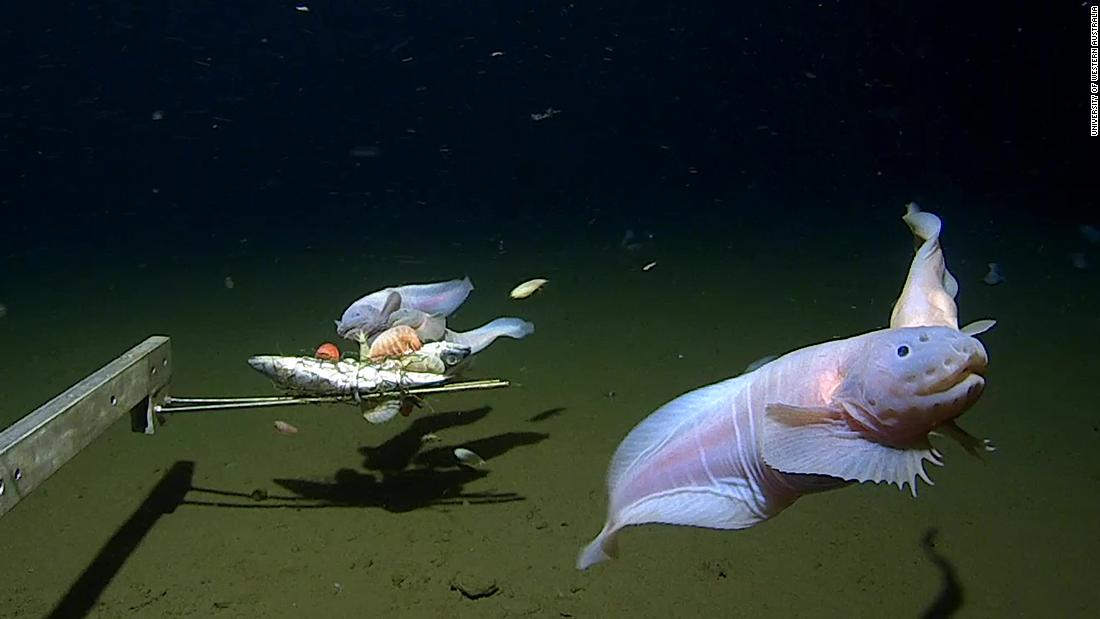The checks come in response to stricter German controls at the shared border, which have been stepped up under Chancellor Friedrich Merz’s government after they were reintroduced in November 2023.
Meanwhile, raging wildfires in forested areas in Germany’s eastern states are reportedly under control after firefighters spent a tense weekend battling the blazes.
The state of Thuringia was particularly badly hit by what was described as its biggest wildfire in over three decades.
Find out what else Germany is talking about on Monday, July 7, in our daily updates with a mix of news, analysis and background.
Skip next section Germany records more than 2,000 drug-related deaths in 202407/07/2025July 7, 2025
Germany records more than 2,000 drug-related deaths in 2024
Zac Crellin
Experts have sounded the alarm after Germany recorded upwards of 2,000 deaths from illegal drug use for the second consecutive year.
A total of 2,137 drug deaths were recorded in 2024, federal drug commissioner Hendrik Streeck said on Monday.
Although the total is slightly down from 2,227 deaths recorded in 2023, authorities nevertheless recorded 14% year-on-year increase in drug-related deaths in under-30s.
Streeck said there was a sharp increase in deaths due to synthetic opioids like fentanyl or nitazene because of the Taliban’s ban on opium production in Afghanistan.
“We must react faster, more systematically and stronger to new, more dangerous drugs,” Streeck said.
Dirk Schäffer, drug policy officer at campaign group Deutsche Aidshilfe, said the increase in drug-related deaths was a “catastrophe.”
“We’ve seen a doubling in the last 10 or 12 years,” he told Germany’s DPA news agency.
The cocaine wars: Germany’s fight against drug gangs
To view this video please enable JavaScript, and consider upgrading to a web browser that supports HTML5 video
https://p.dw.com/p/4x5wRSkip next section German industrial output jumps, raising hopes of recovery07/07/2025July 7, 2025
German industrial output jumps, raising hopes of recovery
The auto industry is at the core of Germany’s economic output Image: Martin Meissner/AP/picture alliance
German industrial production rose unexpectedly strong in May, lifting hopes that Europe’s largest economy may be turning a corner despite trade tensions with the US.
Production climbed 1.2% month-on-month after falling 1.6% in April, when US President Donald Trump announced sweeping tariffs, the federal statistics office Destatis said Monday.
Analysts polled by FactSet had expected a slight drop of 0.1%.
The rebound was driven by a surge in energy output and a 4.9% boost in the struggling automotive sector.
Overall, production was up 1% compared with May last year, adding to optimism after several positive production and orders reports since January.
ING analyst Carsten Brzeski said the data increased the chance that the recovery is about more than just customers placing orders early to avoid tariffs.
“It’s too early to give the all-clear, but signs of at least a cyclical rebound, albeit from low levels, are increasing”, he said.
https://p.dw.com/p/4x4a1Skip next section WATCH: Old German drivers — a risk on the streets?07/07/2025July 7, 2025
WATCH: Old German drivers — a risk on the streets?
Old German drivers — a risk on the streets?
To view this video please enable JavaScript, and consider upgrading to a web browser that supports HTML5 video
https://p.dw.com/p/4x4a0Skip next section WATCH: Experiencing Germany by train — Euromaxx07/07/2025July 7, 2025
WATCH: Experiencing Germany by train — Euromaxx
Experiencing Germany by train — Euromaxx
To view this video please enable JavaScript, and consider upgrading to a web browser that supports HTML5 video
https://p.dw.com/p/4x4ZzSkip next section German welfare organizations warn against proposed cuts to long-term care services07/07/2025July 7, 2025
German welfare organizations warn against proposed cuts to long-term care services
A commission led by German Health Minister Nina Warken will begin work on Monday to find ways of stabilizing the long-term care insurance system in Germany as demographic changes put increasing pressure on its institutions.
According to federal auditors, nursing care insurance providers could face a shortfall of €12.3 billion (which those in need of care temporarily carry the costs themselves.
The commission, composed of representatives from the federal government and Germany’s 16 states, is to present its findings by the end of the year.
https://p.dw.com/p/4x40fSkip next section WTO: EU, Germany push for new world trade body 07/07/2025July 7, 2025
WTO: EU, Germany push for new world trade body
Thomas KohlmannThe World Trade Organization has been hamstrung for years by outdated rules and stalled reform efforts due to internal disagreementsImage: AP
Brussels and Berlin have launched a new initiative aimed at bypassing the long-standing paralysis of the World Trade Organization (WTO).
But how viable is such a solution?
DW looks into it here.
https://p.dw.com/p/4x4ZySkip next section German president remembers Nazi victims at Lithuania ceremony07/07/2025July 7, 2025
German president remembers Nazi victims at Lithuania ceremony
Richard Connor
German President Frank-Walter Steinmeier has commemorated the Lithuanian victims of the Nazis during World War II in a ceremony near the Baltic country’s capital Vilnius.
Steinmeier laid a wreath at the Paneriai Holocaust memorial. The event was also attended by Lithuanian Prime Minister Gintautas Paluckas.
Some 120,000 people were murdered by Nazis and local collaborators in the Paneriai forest during the German occupation of Lithuania between July 1941 and July 1944. At least 70,000 Jews were among them.
https://p.dw.com/p/4x4OuSkip next section Riders crash into crowd at major cycling race, injuring several — reports07/07/2025July 7, 2025
Riders crash into crowd at major cycling race, injuring several — reports
Two spectators at the German Track Cycling Championships in the western municipality of Dudenhofen were flown to hospital by helicopter on Sunday after two riders crashed into the crowd at high speed, German media have reported.
Eight other spectators were more lightly injured, and the two riders, who were traveling at about 60 kmh (37 mph) when they went over the safety barriers, escaped with just grazes and bruises, according to the reports.
The incident, which occurred during the elite keirin semi-finals, led to the remainder of the final day of competition being called off, Germany’s SWR broadcaster reported.
“The health of athletes and spectators always comes first,” German Cycling Federation (BDR) marketing and communications officer Oliver Streich said in a statement. “There was therefore no alternative to canceling the event.”
https://p.dw.com/p/4x3dDSkip next section Space capsule with ashes of 166 deceased plunges into Pacific07/07/2025July 7, 2025
Space capsule with ashes of 166 deceased plunges into Pacific
A space capsule launched by a German start-up that was meant to carry the ashes of 166 people twice around the Earth before returning them to their loved ones has been lost in the Pacific Ocean after “an anomaly occurred” upon re-entry into the Earth’s atmosphere.
Vezi toate știrile de pe actualizări germania incendiile
The Nyx capsule was launched on June 23 as part of an initiative called “Mission Possible” by The Exploration Company (TEC) in collaboration with the Texas-based company Celestis, which has specialized in space burials for more than two decades.
TEC said communication had been lost with the capsule shortly before it was due to splash down, with all remains of the deceased and some experimental items, including cannabis seeds, now scattered at an unknown location in the Pacific.
https://p.dw.com/p/4x3h7Skip next section DW’s Global Media Forum gets underway07/07/2025July 7, 2025
DW’s Global Media Forum gets underway
DW’s annual Global Media Forum (GMF), to which Germany’s international broadcaster has invited media professionals from across the globe, kicks off on Monday in the western city of Bonn.
The event, which runs for two days, has the motto this year of “Breaking barriers, building bridges.”
This year’s Freedom of Speech Award, a prize given annually by DW for outstanding work in promoting freedom of expression and human rights, will go to Tamar Kintsurashvili from Georgia.
Details on the GMF can be found in this article:
Global Media Forum 2025: Building bridges to beat populism
https://p.dw.com/p/4x3RsSkip next section Poland restores spot checks at German border in tit-for-tat move07/07/2025July 7, 2025
Poland restores spot checks at German border in tit-for-tat move
Polish guards check vehicles at the Slubice border crossing Image: Lisi Niesner/REUTERS
Authorities in Poland on Monday began carrying out random checks at 52 border crossings at the country’s border with Germany in a move contrary to the spirit of the visa-free Schengen zone.
The move comes in response to stricter German controls at the shared border, which have been stepped up under Chancellor Friedrich Merz’s government after they were reintroduced in November 2023.
The Polish border checks, which also apply to Poland’s border with Lithuania, are set to run initially until August 5.
Interior Minister Tomasz Siemoniak said Sunday the controls were meant only to combat “illegal immigration” and that Polish and other EU nationals would not face hindrances.
The controls will reportedly focus on buses, minibuses, cars carrying large numbers of passengers and vehicles with tinted windows.
EU rules on the Schengen area stipulate that countries are allowed to introduce temporary measures as a “last resort” and “in exceptional situations.”
Read the full story here
https://p.dw.com/p/4x3RrSkip next section Wildfire situation stabilizes in Germany’s east07/07/2025July 7, 2025
Wildfire situation stabilizes in Germany’s east
Firefighting aircraft were deployed to battle the blazes in ThuringiaImage: Daniel Vogl/dpa/picture alliance
Several wildfires in forested areas in Germany’s eastern states are reportedly under control after firefighters spent a tense weekend battling the blazes.
The state of Thuringia was particularly badly affected, with a fire in the Saalfeld-Rudolstadt district described as the state’s biggest wildfire in more than three decades.
“Our forces are exhausted,” said district administrator Marko Wolfram on Sunday, adding that he hoped emergency staff could be reduced from 500 on Sunday to 300 on Monday as the situation eased.
Hundreds of firefighters were also deployed between the states of Saxony and Brandenburg, where raging fires in the Gohrischheide region have burnt out large swathes of natural landscape.
The wildfires broke out as Germany, along with much of western Europe, was hit by the first major heat wave of the summer.
https://p.dw.com/p/4x3SsSkip next section Welcome to our coverage07/07/2025July 7, 2025
Welcome to our coverage
Timothy Jones | Elizabeth Schumacher Editor
A big Guten Morgen from the newsroom in Bonn as we start a new week.
Firefighters in the east of Germany, who have been battling major blazes all weekend, are feeling more optimistic as the weather cools following last week’s heat wave.
And DW is hosting the Global Media Forum in Bonn, an event bringing together journalists from across the world at a time when press freedom is under growing pressure even in countries once known as bastions of media liberty.
We will be keeping you up to date on these and other developments in our blog, as well as presenting in-depth analyses and explainers on topics related to Germany from our colleagues across DW’s departments.
https://p.dw.com/p/4x3X6Timothy Jones Writer, translator and editor with DW’s online news team.Richard Connor Reporting on stories from around the world, with a particular focus on Europe — especially Germany.Send us your feedback
Sursa: DW
